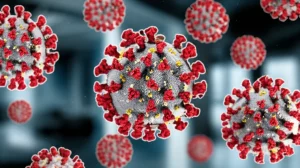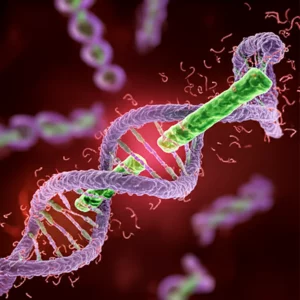The Virus Strikes Back: Uncovering SARS-CoV-2’s Sneaky Drug Resistance Tricks
Hey there! So, you know how COVID-19 felt like it was maybe, just maybe, winding down? Well, turns out this little virus, SARS-CoV-2, is still hanging around, and like any good movie villain, it’s always looking for ways to outsmart us. That’s why scientists are constantly on the hunt for new ways to fight it, and why understanding how it develops resistance is super important.
Why We Need New Weapons
We’ve got some antiviral drugs already, right? Stuff that targets the virus’s ability to copy its RNA (like remdesivir and molnupiravir) or its main protein-cutting tool (like nirmatrelvir, part of Paxlovid). And they’ve been a big help! But, because SARS-CoV-2 is an RNA virus, it’s prone to making little mistakes when it copies itself – mutations. And sometimes, these mutations make the existing drugs less effective. We’ve seen it happen with the main protease (Mpro) and the RNA polymerase (RdRp) inhibitors.
So, the clever folks in labs are looking for other weak spots in the virus’s armor. And one really promising target is something called the Papain-Like Protease, or PLpro for short.
Meet PLpro: The Virus’s Multi-Tool
Think of PLpro as one of the virus’s essential multi-tools. It does two main jobs:
- Cutting the viral proteins: The virus makes long chains of protein, and PLpro is one of the enzymes that chops these chains into smaller, functional pieces the virus needs to build its replication machinery.
- Dodging our immune system: This is the really sneaky part! PLpro can remove certain tags (ubiquitin and ISG15) from our own proteins. Our cells use these tags as signals to fight the virus, so by removing them, PLpro helps the virus hide from our defenses.
Because it’s so crucial for both making new virus particles and suppressing our immune response, PLpro is a fantastic target for new drugs. It’s a bit trickier to target than Mpro, apparently, because of its specific structure, but the potential is huge.
New Hope on the Horizon: PLpro Inhibitors
Recently, some exciting new PLpro inhibitors have popped up. Two in particular, called Jun12682 and PF-07957472, have shown real promise, even working well in mouse models. These drugs basically jam up PLpro’s machinery by binding to a specific spot on the protein, particularly around a region called the BL2 loop and groove.
But here’s the million-dollar question: can the virus mutate to become resistant to *these* new drugs too? That’s exactly what this study dives into.
Playing Detective: Finding Natural Resistance
The researchers wanted to get ahead of the curve. Instead of waiting for resistance to show up in patients, they decided to look for it *before* it became a big problem. They used two main approaches:
Looking at the Blueprint (Structure-Based Prediction):
They started by looking at the 3D structure of PLpro with Jun12682 or PF-07957472 stuck to it (like looking at a key in a lock). They identified all the specific amino acids (the building blocks of the protein) that the drug molecule touches or interacts with directly. Their hypothesis was: if one of these amino acids changes (mutates), the drug might not bind as well, leading to resistance.
Then, they checked a massive database (GISAID) of naturally occurring SARS-CoV-2 sequences from around the world to see if any of these key amino acids had already mutated in circulating viruses, especially high-frequency mutations. They picked the most common mutations at these spots and then did the hard work of creating those specific mutant PLpro proteins in the lab.

They tested these lab-made mutant PLpros to see two things:
- Did the mutation mess up PLpro’s normal job (its enzymatic activity)? If a mutation makes the protein useless, the virus carrying it probably won’t survive or spread well.
- Did the mutation make the PLpro resistant to Jun12682 and PF-07957472 (and an older inhibitor, GRL0617, for comparison)? They measured how much drug was needed to stop the mutant PLpro compared to the normal one.
What they found was super interesting. Some mutations at certain spots (like D164, P248, Y264) severely crippled PLpro’s activity – so, probably not a big resistance threat in the real world. Other spots (like M208 and P247) had common mutations, but these didn’t cause significant drug resistance.
But then there were the “hot spots”! They identified several mutations at three key residues – E167, Y268, and Q269 – that caused significant resistance to Jun12682 and PF-07957472 (meaning you needed way more drug to stop them), *while still keeping* their normal protein-cutting activity. This is the dangerous combination – resistance without losing fitness!
Watching the Virus Adapt (Serial Viral Passage):
The second approach was like putting the virus in a mini-evolutionary race in the lab. They took live SARS-CoV-2 virus and grew it in cells, but this time, they added Jun12682. With each “passage” or round of growth, they increased the amount of drug. The idea is that any virus particles that happen to have a mutation making them slightly resistant will have an advantage and multiply better than the non-resistant ones. Over several passages, resistant mutants should take over the population.
They did this experiment multiple times and sequenced the virus’s PLpro gene at different stages to see what mutations popped up and became dominant.

And guess what? This independent experiment *also* identified mutations at E167 (specifically E167G) and Q269 (specifically Q269H) as emerging under drug pressure! This really validated the structure-based predictions. They also found some other mutations (like V98L, L152F, T168I) that weren’t directly in the drug binding site but appeared alongside E167G or Q269H. Turns out these “allosteric” mutations, while not causing resistance on their own, could *enhance* resistance when combined with the hot spot mutations. Sneaky indeed!
They even made recombinant viruses with these specific mutations to confirm that they did indeed cause drug resistance in actual infected cells and looked at how well these mutant viruses grew. Generally, the mutants grew a *little* slower than the wild type (normal) virus, but not so much that they’d be outcompeted in the presence of the drug.
Getting Down to the Nitty-Gritty (Molecular Dynamics)
To really understand *why* these mutations cause resistance, they used fancy computer simulations called Molecular Dynamics (MD) and Free Energy Calculations. They simulated the drug molecule (Jun12682) interacting with the normal PLpro and the mutant versions (like E167G, Y268H, Q269H, and the double mutant E167G/Q269H).

These simulations showed that in the resistant mutants, the drug couldn’t form the same strong connections (like hydrogen bonds and π-π stacking interactions) with the protein that it does in the normal version. The mutations essentially changed the shape or charge distribution of the binding site just enough to weaken the drug’s grip. The double mutant E167G/Q269H was the worst offender, disrupting almost all the direct hydrogen bonds!
What This All Means
So, the big takeaway from this study is that E167, Y268, and Q269 are key sites where mutations can lead to resistance against these new PLpro inhibitors, Jun12682 and PF-07957472. The viral passage experiments confirmed that mutations like E167G and Q269H can emerge quickly under drug pressure and become dominant.
This is super valuable information! It tells us:
- What to watch for: We need to keep an eye on circulating SARS-CoV-2 strains to see if these specific mutations start appearing more frequently, especially in patients being treated with PLpro inhibitors.
- How to design better drugs: Knowing *where* resistance is likely to pop up helps chemists design the *next* generation of PLpro inhibitors. Maybe they can design drugs that bind to a slightly different spot, or that rely on different types of interactions that these mutations don’t disrupt as easily.

It’s important to remember that these findings are specific to SARS-CoV-2 and these particular inhibitors that bind to the BL2 loop/groove. Inhibitors that target other parts of PLpro or other viral proteins (like Nirmatrelvir targeting Mpro) might still work fine against these specific mutants, which is good news for combination therapies.
Ultimately, staying ahead of a constantly evolving virus like SARS-CoV-2 is a continuous battle. Studies like this, which identify potential resistance mechanisms *before* they become widespread, are absolutely critical in developing effective and durable treatments. It’s like getting a heads-up from the virus’s playbook!
Source: Springer







